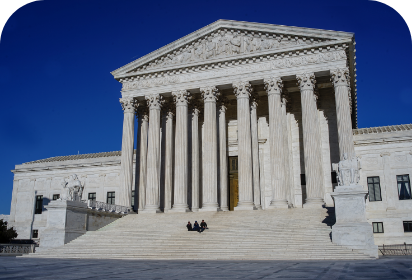
I’m guessing that you’ve heard about last month’s Supreme Court decision to reverse Affirmative Action. But just in case you’ve been on an extended summer vacation sans technology (lucky you) and didn’t get the memo, the June 29 ruling effectively forbids colleges from utilizing ‘race-conscious’ admissions practices to diversify their campuses.
Now as you might imagine, I’ve been receiving a ton of questions and requests for insight about the Court’s decision from both my students as well as other educators. But before explaining how I think you (or your children) may be affected by the recent ruling, I wanted to provide a few caveats as well as a little history, and hopefully some perspective.
First the caveats: I am most definitely not a constitutional law scholar and therefore I will not offer any opinion on the court’s reasoning. Furthermore, while I am human and therefore have a personal opinion, my professional obligation in this article is to offer you my insight into how this change might affect you/your child’s admissions chances and overall admissions strategy.
Now for a little history: In 1978 the Supreme Court ruled on the constitutionality of using ‘affirmative action’ as a specific tool for colleges and universities to increase diversity on their campuses. And, for nearly 50 years, this ruling has stood. That said, how states and universities have utilized affirmative action in its admissions practices has varied school-to-school, state-to-state and over time. For example, California banned Affirmative Action at its state universities in 1996 (Proposition 209). So for schools like UCLA or Berkeley, the Court’s decision won’t really affect anything. Truth is Arizona, Florida, Idaho, Michigan, Nebraska, New Hampshire, Oklahoma, and Washington had also previously banned Affirmative Action… so… theoretically not much will change in public universities’ admissions practices in these states either. Private Universities are another matter. For them — as well as at public universities in states where Affirmative Action has stood — things will change (assuming they wish to continue receiving federal support). How much remains to be seen.
As is often the case in major legislation, the Court did leave some room for interpretation in how the ruling gets implemented. While direct, race-conscious admissions is now prohibited, admissions offices can consider race in the personal statement as it relates to the applicant’s experience. It’s important to understand that the overwhelming majority of universities will wish to build a multi-cultural student body and will utilize other criteria — such as personal interviews, additional writing supplements (see below), a high school’s profile (or location) — to do so. There are likely quite a few changes to come – some easier to implement (hence, to anticipate), others less easy to project – and thus remain to be seen.
That said below is a summary of a some changes we might expect to see immediately – as in with this upcoming admissions cycle (as well as in years to come):
1. The application process will become even more difficult – as in both longer to complete and more subjective to evaluate. There will likely be more and a greater emphasis on written supplements and alumni interviews
Today, most colleges require a personal statement, or essay, as part of the application. Students have wide latitude in how they may respond. The personal statement is an important part of the process today, and it may take on an even greater role as admissions offices place even more emphasis on a student’s ability to write his or her story, where race can be a significant factor. Or, schools will seek additional essays, or supplements, where applicants can more directly express their story as it relates to their race, ethnicity, or cultural background. Students applying to universities in California where, as previously mentioned, Affirmative Action has been banned for years, have to write four additional essay supplements. Yikes.
But in addition to the sheer increase in volume, there’s also likely to be some nuanced changes to the content required. Students have always been allowed to share stories about their racial or ethnic background, and schools have been allowed to consider how race may have impacted their life experience. This will continue – and is likely to be expanded to include specific prompts encouraging students to talk about their background. As Chief Justice Roberts wrote in his majority opinion, “nothing in today’s opinion prohibits universities from considering a student’s essay that explains how race affected [that student’s] life.”
2. This will further expedite the trend to make test-optional or test-flexible admissions policies more permanent.
A movement to lessen the importance of standardized tests in admissions practices has been underway for over a decade. This movement was accelerated during Covid and many of the schools that had ‘temporarily’ eliminated the test requirement have continued to de-emphasize test scores in admissions. There numerous reasons why this movement has grown, which I’ve previously written extensively about so I’ll forgo them for now. What I will say is that I expect the Court’s ruling to further solidify the existing test-optional admissions practices. It’s been well-researched that students with greater resources and who have access to test prep tend to perform better on standardized tests (there’s a surprise!). By adopting test-optional admissions, colleges put greater emphasis on other aspects of the application (see above), which should create opportunities for students with fewer resources and access.
3. Though the Court ruling allows for preferential Legacy Admissions practices to continue, many Universities will face pressure to eliminate this practice
There are still a number of colleges that give preference to Legacy Admissions, which benefits applicants whose parents attended the school, or who are significant donors. Colleges argue that legacy preferences help create a sense of community and encourage alumni giving, which schools naturally want to both preserve and boost. This is one reason why legacy admissions persists at many elite colleges such as Harvard, Princeton, Stanford, and Yale. Tufts, my alma mater, continues to offer legacy preference. One benefit of attending these schools is to be surrounded by students of privilege who may offer access to elite opportunities later in life – the very students who benefit from legacy admissions practices. That said, research has shown that legacy preference can adversely affect campus diversity. Some schools (like Amherst College, Johns Hopkins, MIT) have eliminated their legacy policies with the express objective of helping to create more equity and diversity on campus. Look for other schools to similarly eliminate the practice in the face of public pressure to do so.
4. More State Universities may adopt percent-based admissions policies
Some states, such as Texas, Illinois and Colorado, already guarantee admissions to eligible in-state applicants (often in the top 10% of their high school class) by statute. Florida offers students in the top 20% of their class access to a state university (not necessarily the flagship, University of Florida). By extending percent-based admissions, colleges create access to applicants who come from high schools that are more racially diverse. While I do not expect many state governments to codify such policies, it would not surprise me if specific universities begin to implement percent-based admissions guarantees/requirements to in-state students (as in the top 10% of a class is guaranteed admission). It remains to be seen as to whether this could create a rush of students transferring to ‘traditionally poorer performing’ high schools (not likely) – or to parents reconsidering whether an uber-competitive, pricey private high school is the right choice when they can encourage their children to become a top performer at the local public high school and secure a spot at a top, in-state university.
5. Colleges may place greater scrutiny on a student’s zip code in order to promote diversity
While the Common App will no longer send data on race and ethnicity, they will still share address information about the student. Admissions offices could use this information in an effort to admit a more diversified freshman class.
6. Schools will face pressure to eliminate scholarship programs that target students of color
The Supreme Court’s decision in both the Harvard and UNC cases focused specifically on admissions, and not on financial aid or scholarship. However, many colleges offer scholarship or aid programs that target specific groups, including minority groups, thereby allocating spots in the class to people of color. An example is FSU’s CARE Program, which provides scholarships to first-generation students from minority populations (in this case, first-generation means the student is the first in the family to attend college). In Missouri just last week, the state attorney general ordered all colleges in that state to eliminate race-based scholarship programs. Such practices could be adopted by other states as well. But, new programs will rise in their place…ones that may benefit your child if you know where to find them.
With that in mind, I’ll leave you with this: the Court’s recent decision to overturn decades of precedent will actually impact only a small percentage of colleges, mostly the very elite/selective. And while these universities can give students access to the top graduate programs and positions at leading financial institutions, they are not the only — or even the most desirable– path for MOST students. Fact is that the majority of universities in the United States admit well over 50% of their applicants -and at many of these schools, affirmative action is a nonfactor in their admissions practices.
But, college admissions (including financial aid) was already a complex exercise. With the elimination of affirmative action, elite universities will likely implement new methods to evaluate applicants in an effort to maintain a diverse student body. Other universities will follow their lead (that’s just what happens). We’re ready for that and encourage you to become ready as well. At the end of the day, the college application is an opportunity to share something about yourself that is NOT necessarily obvious from your transcript and resume. It’s your chance to tell your unique story, which may include your race, ethnicity or cultural background, but most certainly includes your experiences. Do that well and regardless of the macro-changes, you will have a positive application experience and a number of great admissions options to choose among!
If you feel that your child would benefit from additional guidance in tackling college admissions, or if you are looking for help in understand how financial aid works, then reach out to us and let’s get connected.



